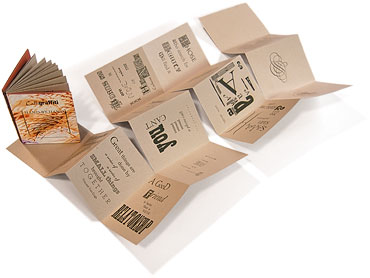Donating letterpress work to libraries
At Lead Graffiti in Newark, Delaware, we do a particular ‘creative letterpress’ workshop for 6 to 14 participants that results in a book bound without sewing and without glue, where each participant produces a page using wood & metal type. We finally got around to gathering an example of each and donating it to Special Collections at the University of Delaware (Ray taught there for three decades).
One of the things the donation allows is for all of the participants (229 to date) to include their work being in this collection on their résumés. It provides a nice connection between them and letterpress that is useful beyond both the workshop experience (which they also often include in their listing of educational effort) and the piece itself which for design students, can go into their portfolio (3 for the price of 1). It also gets them thinking about making things that last.
Take a look at our post on our blog about the donation.
http://blog.leadgraffiti.com/wp-admin/post.php?action=edit&post=276
We’d like to encourage anyone that does workshops to both do group projects in workshops and that you also find a connection to a nearby Special Collections to which you can regularly donate workshop samples.
The blog post shows a example of a lockup which is surprisingly easy to accomplish.
Of course, you can also donate your personal work.

ws-pointed-pen-book-370.jpg
I’ve always wondered about this. I have a friend who owns an art gallery, and the artists they represent always have a long list of museums that hold their work. It was enlightening to find out that most of these holdings were actually donations, not things that the museum actively acquired. There’s a big difference.
Now since Ray taught at the University of Delaware for so many years, I suppose that that connection would incline the University to accept and archive works donated by him. Also, I think that a long-standing series of some rarity, such as the caterpillar books, would be welcomed by a Special Collections department because of its place in printing history. If I were a participant in this series, I wouldn’t hesitate to list it on my résumé, though I would not say that “My work is housed in the Special Collections…” Instead I would say something like “I participated in the creative workshop at Lead Graffiti and contributed to a book that is housed in the Special Collections…”
So I guess what I’m saying is that printers should do some research before approaching a library to accept a donation, since they may end up a little disappointed if not embarrassed.
Barbara